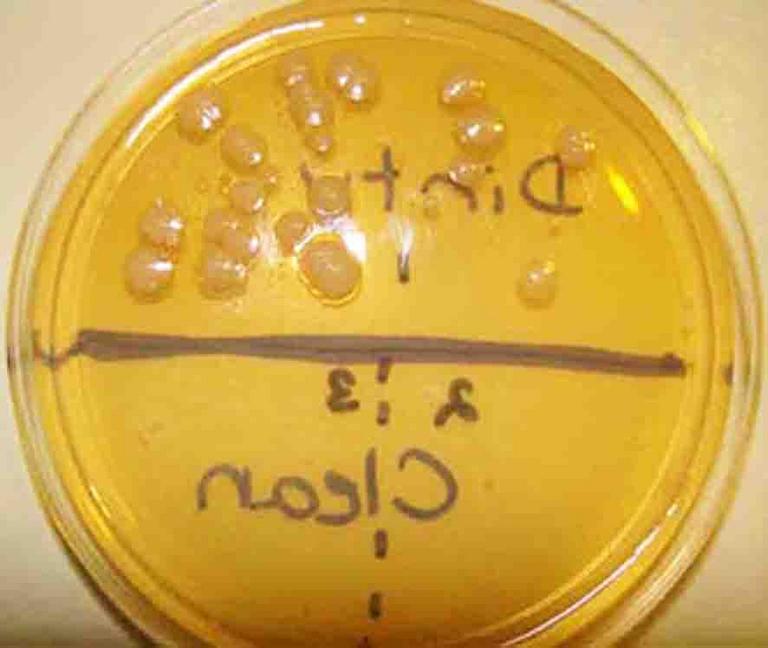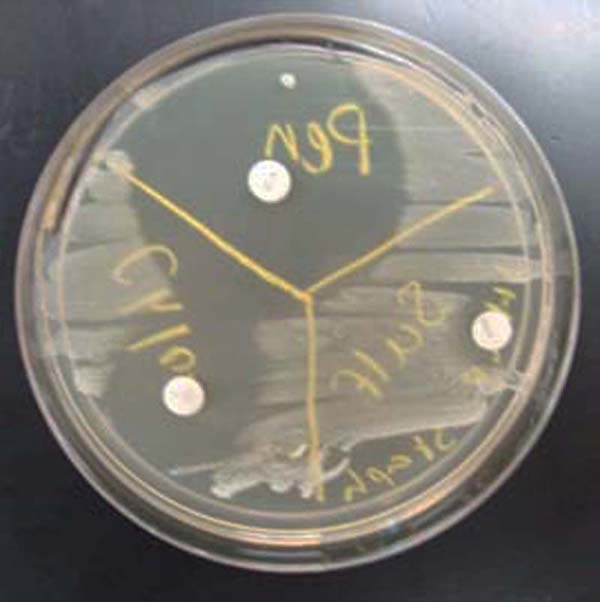 | ||||
Mode of Action of
Cephalosporin Antibiotics
There are many different classes of antibiotics
each exerting a different type of inhibitory effect that specifically impacts bacteria. Bacterial cells are
prokaryotic; primitive cells that differ significantly from humans
Article Summary: Antibiotics are chemotherapeutic agents used to inhibit or kill bacteria. But how do cephalosporins (a type of beta-lactam) destroy these microbes without hurting our cells?
MOA of Caphalosporin (Beta-lactam) Antibiotics
You have free access to a large collection of materials used in a college-level introductory microbiology course. The Virtual Microbiology Classroom provides a wide range of free educational resources including PowerPoint Lectures, Study Guides, Review Questions and Practice Test Questions.
SPO VIRTUAL CLASSROOMS
Secondary stain (counterstain): The safrinin counterstain imparts pink color to the colorless Gram- bacteria, but doesn't change the color of Gram+ cells.
Each article in this series covers a specific class of antibiotic and includes the following information:
 | ||||||
HOME MICROBIOLOGY EXPERIMENT FROM SPO
TSY agar with sample from dirty dishes on top (note bacterial colonies that grew), and sample from cleaned dishes on bottom.
- a list of the specific antibiotics that fall in the class (generic and brand names)
- mode of action
- type of infection the antibiotic class to against
- type of bacteria inhibited or killed
- pros and cons of using the class of antibiotics
Cephalosporin Antibiotics
Cephalosporins are categorized by "generation," a classification that relates to their antimicrobial properties. There are four generations; each newer generation of cephalosporins having greater gram-negative antimicrobial effectiveness than the generation before. The later the generation, the greater the cephalosporin’s effectiveness against resistant bacterial strains.
Cephalosporins include the following drugs. There are many different types and brands of cephalosproins, and this list is by no means exhaustive.
- First Generation: Cefadroxil (cefadroxyl; Duricef®); Cefalexin (cephalexin; Keflex®); Cefalotin (cephalothin; Keflin®); Cefapirin (cephapirin; Cefadryl®); Cefazolin (cephazolin; Ancef, Kefzol®); Cefradine (cephradine; Velosef®)
- Second Generation: Cefaclor (Ceclor®, Distaclor®, Keflor®, Raniclor®); Cefonicid (Monocid®); Cefprozil (cefproxil; Cefzil®); Cefuroxime (Zinnat®, Zinacef®, Ceftin®, Biofuroksym®)
- Third Generation: Cefdinir (Omnicef®); Cefixime (Suprax®); Cefotaxime (Claforan); Cefpodoxime (Vantin®, PECEF); Ceftibuten (Cedax®); Ceftizoxime (Cefizox®); Ceftriaxone (Rocephin®); Cefoperazone (Cefobid®); Ceftazidime (Fortum®, Fortaz®)
- Fourth Generation: Cefepime (Maxipime®)
Cephalosporin Mode of Action
Cephalosporins are a type of β-lactam antibiotic closely related to the penicillins. They are bactericidal, with the same MOA as other beta-lactams.
Cephalosporins disrupt synthesis of the peptidoglycan layer of bacterial cell walls. Peptidoglycan is a strong structural molecule specific to the cells walls of bacteria. With the cell wall structure compromised, the bactericidal result is lysis and death of the cell.
Our cells do not have cells walls or peptidoglycan, therefore, B-lactam antibiotics are able to target bacterial cells without harming human cells.
TSY agar inoculated with Staphylococcus. Three antibiotic sensitivity disks appear on this medium: penicillin, sulfa, and ciprofloxacin (clockwise from top). Note the "zone of inhibition" around each antibiotic disk. The larger the zone of bacterial inhibition, the more effective the antibiotic is against the bacteria.
Cephalosporin core structure, where "R" is the variable group.
Page last updated: 8/2015
 | ||||||
SPO is a FREE science education website. Donations are key in helping us provide this resource with fewer ads.
Please help!
(This donation link uses PayPal on a secure connection.)
Main Classes of Antibiotics
- Cephalosporins (a Beta-lactam)
- Penicillins (a Beta-lactam)
- Quinolones (Fluoroquinolones)
- Sulfonamides (Sulfa Drugs)






